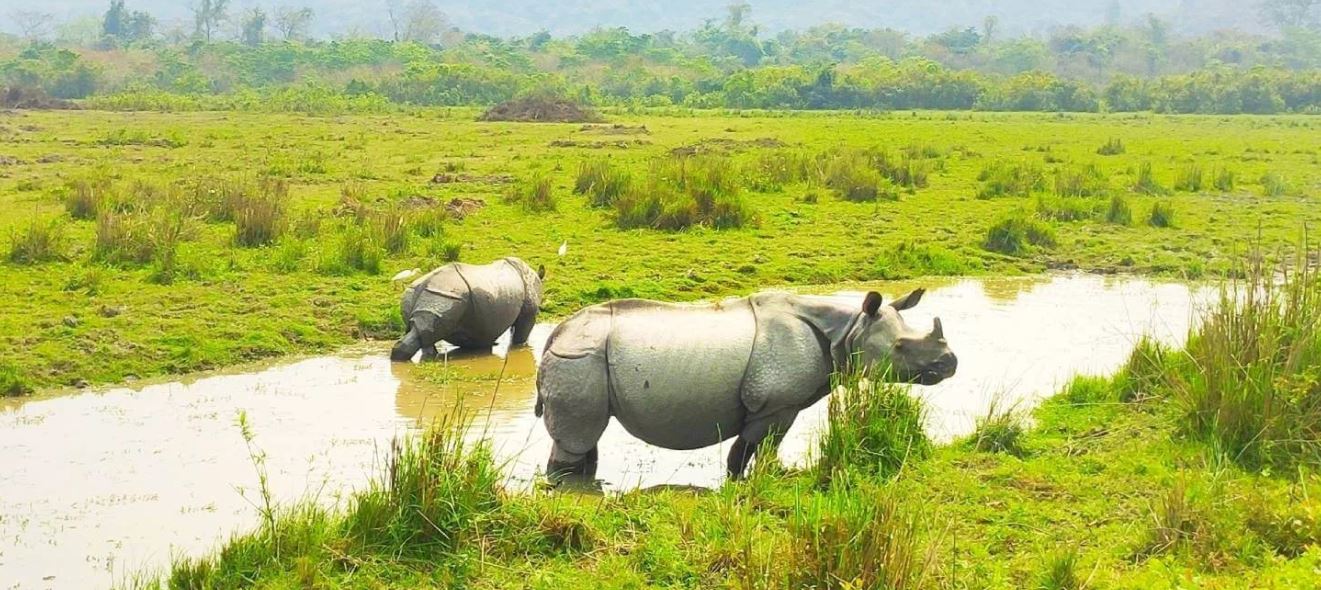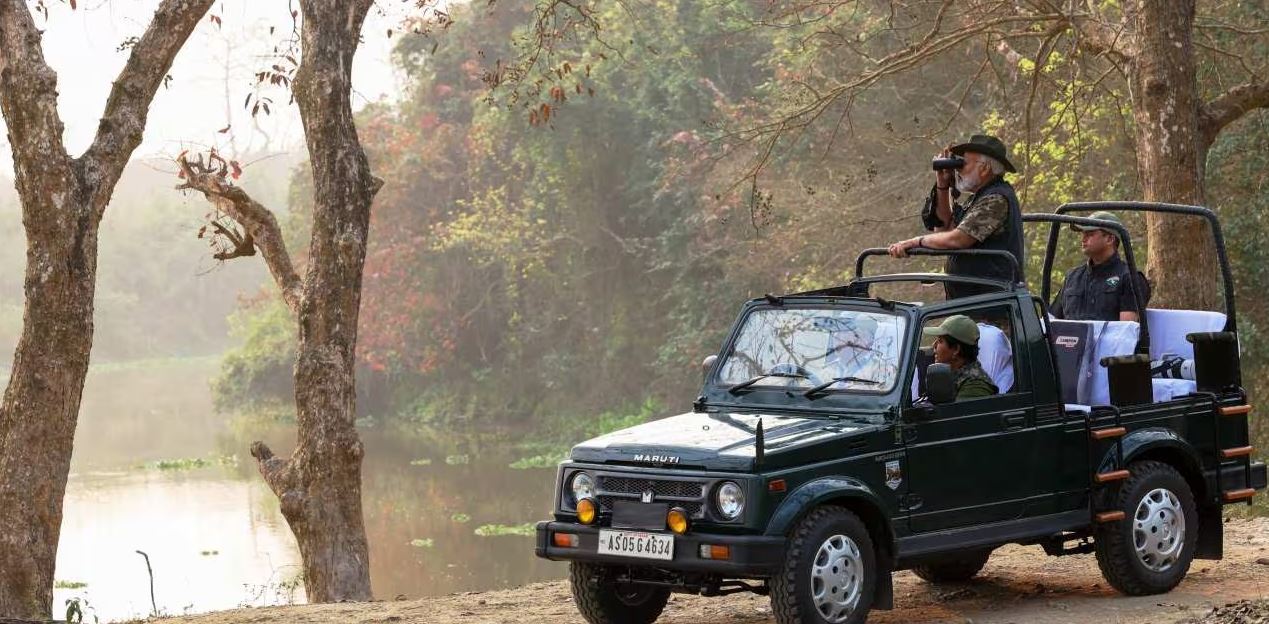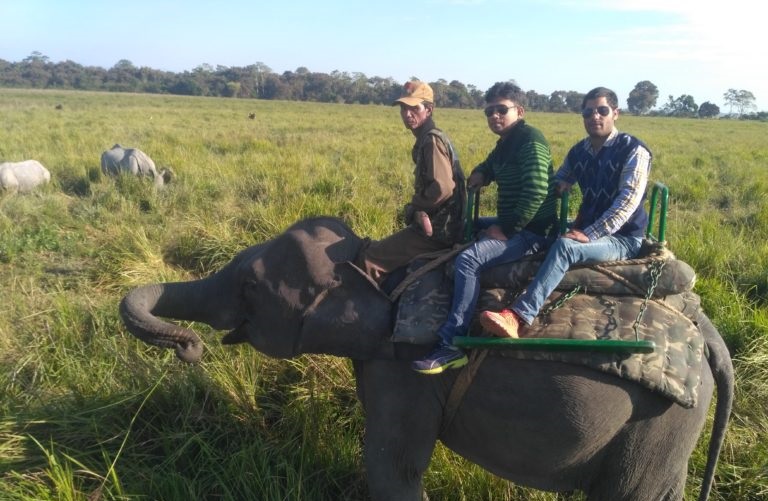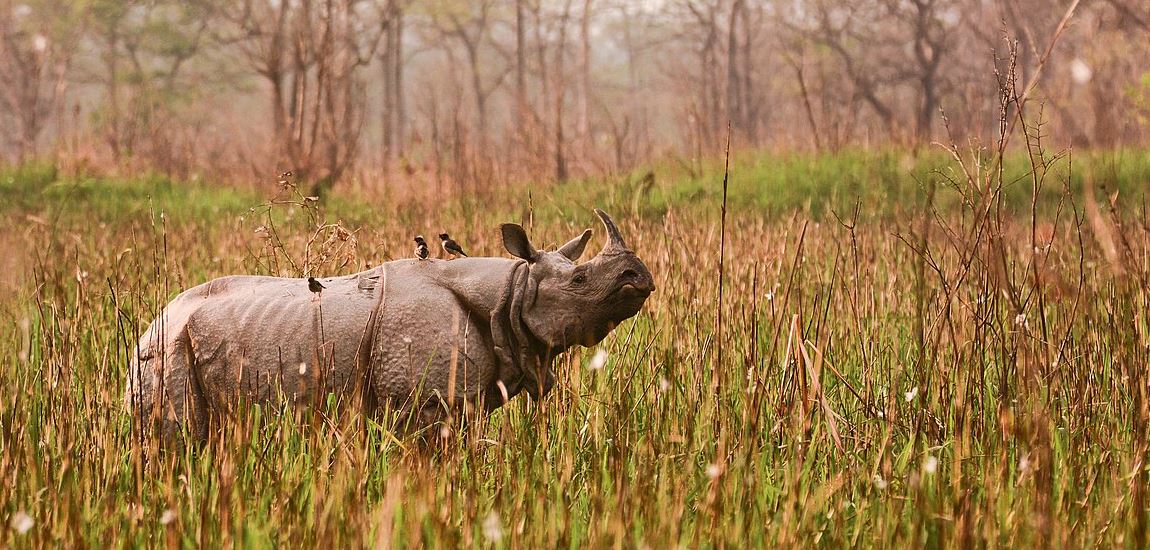
Kaziranga – A Highly Celebrated & 3rd Most-Visited Wildlife Haven
Kaziranga National Park Records Unprecedented Tourist Surge, Emerges as a Top Wildlife Destination in India
Kaziranga National Park was established on 11 February 1974. It is a popular conservation ground for one-horned rhinos and also hosts a significant population of Bengal tigers. Since its inception, Kaziranga has received incredible footfall, thanks to the fantastic location of Assam, with jaw-dropping backdrops. As years passed, its popularity has elevated impressively. Assam’s iconic Kaziranga National Park and Tiger Reserve has witnessed a remarkable 35% rise in tourist footfall between October 1, 2024, and May 18, 2025, further cementing its position as a premier wildlife tourism hub in India.
According to park officials, a record-breaking 4,43,636 visitors explored the UNESCO World Heritage Site during the latest season, up from 3,28,305 in the previous year. Among these, 18,463 were international tourists, highlighting the park’s growing appeal beyond domestic borders. This impressive surge places Kaziranga as the third most visited national park in the country, following Periyar National Park in Kerala and Ranthambore in Rajasthan.

Conservation Success Meets Tourism Boom
Kaziranga’s enduring appeal is rooted in its successful conservation efforts and rich biodiversity. Famous for its population of the Indian one-horned rhinoceros, the park also supports species like Royal Bengal tigers, Asian elephants, wild water buffalo, and eastern swamp deer, collectively promoted as its “Big Five”. The monsoon-revived landscape and favourable weather during its peak season from October to May make it ideal for wildlife viewing.
Park Director Sonali Ghosh attributes the growth to a blend of enhanced infrastructure, diversified tourism offerings, and strategic promotion. “The rise in visitor numbers is driven by new tourism activities, improved access, eco-friendly infrastructure, and increased national and international visibility,” she said. The Kaziranga online safari booking system also plays a key role in streamlining visitor management, offering tourists an easy and efficient way to plan their safaris in advance.
Spanning 1,300 sq km across four districts, Kaziranga has expanded its tourism portfolio in recent years. Beyond traditional jeep safaris, the park now offers birdwatching, trekking, boat safaris, dolphin viewing, cycling trails, and exploration of buffer zone reserves. These additions cater to both adventure seekers and nature enthusiasts. Infrastructure upgrades – ranging from better road connectivity to eco-conscious lodging options – have made the park more accessible and visitor-friendly. The government has actively supported eco-tourism, including incentives for electric safari vehicles, as highlighted in the recent Assam state budget.
Global Recognition and High-Profile Visits
Kaziranga’s rising international profile has been bolstered by prominent visits, including those by Prime Minister Narendra Modi, Bhutan’s King Jigme Khesar Namgyel Wangchuck, and over 60 foreign Heads of Mission. During the “Advantage Assam 2.0” summit in February 2025, External Affairs Minister Dr. S. Jaishankar also toured the park, further boosting its visibility. The park recently earned a spot on The New York Times’ list of top global travel destinations, reinforcing its growing global appeal.
The influx of tourists has significantly benefited the local economy, generating employment in sectors like hospitality, transportation, and handicrafts. The park has also promoted community-based initiatives, such as eco-shops run by the Kaziranga Staff Welfare Society, offering locally-made sustainable products. “From cycling trails in Laokhowa during silk-cotton bloom season to river safaris on the Brahmaputra and dedicated birding routes, we are focusing on wellness and immersive outdoor experiences,” Ghosh added.
As Kaziranga continues to balance conservation with sustainable tourism, it sets an inspiring example for national parks across India. With its diverse wildlife, immersive experiences, and strengthened eco-tourism model, Kaziranga is not just a sanctuary for endangered species but also a thriving, inclusive destination for global tourists.


